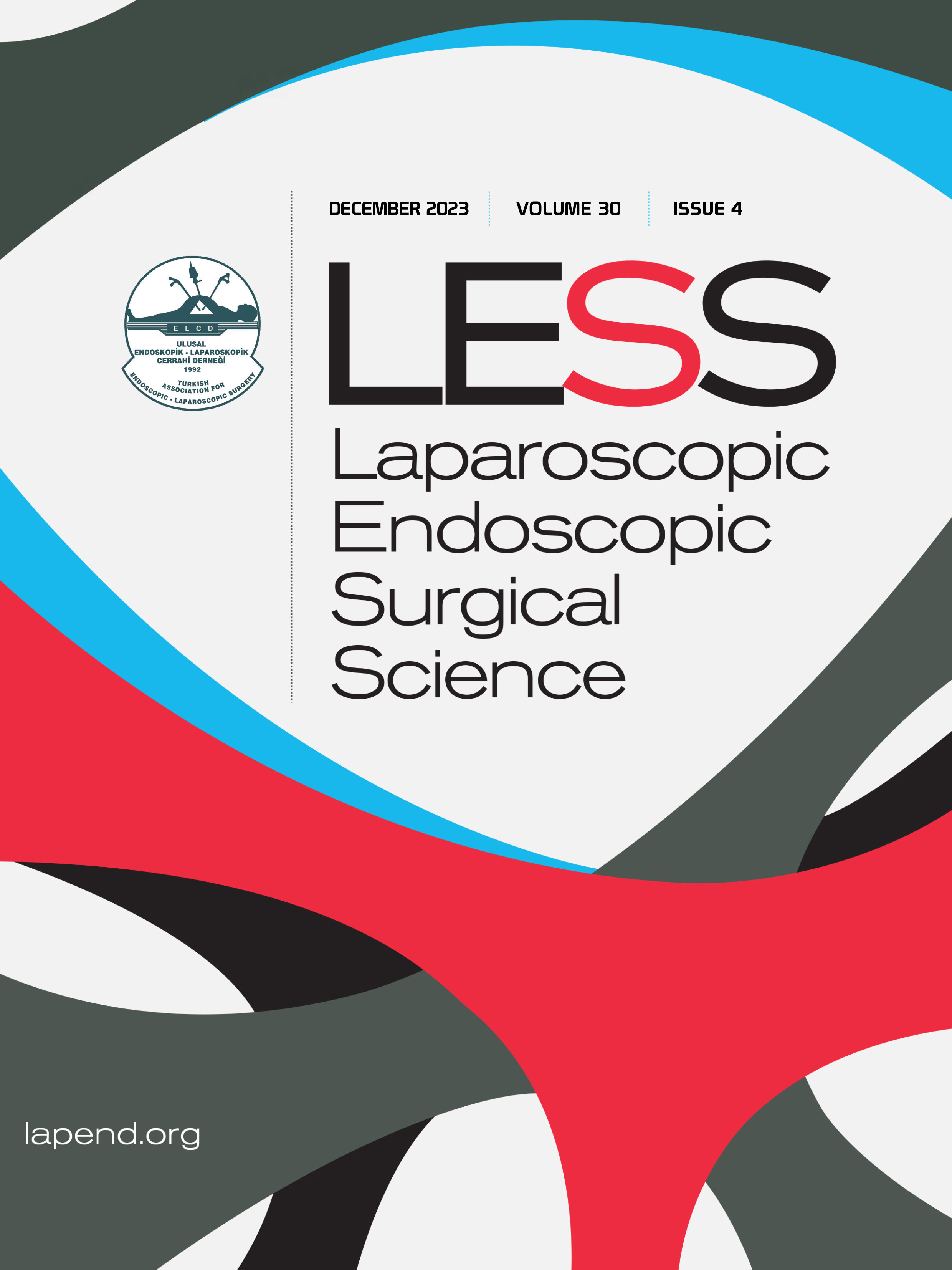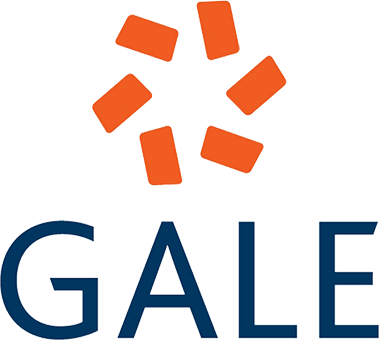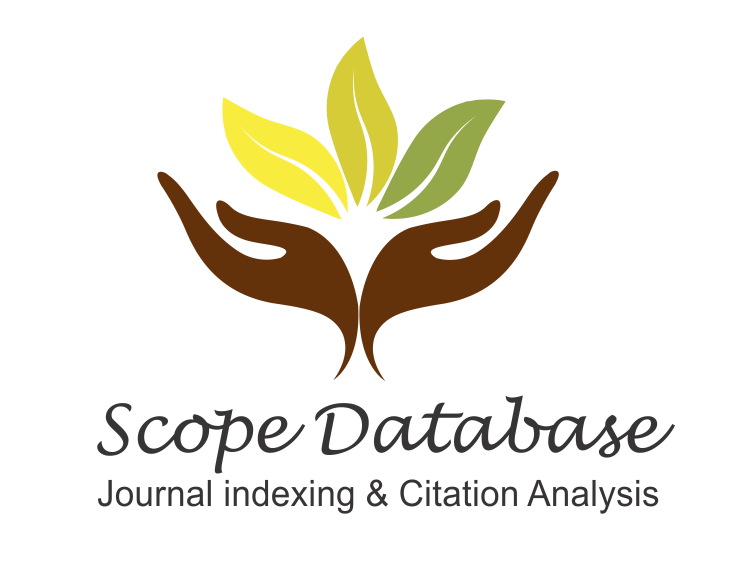Volume: 11 Issue: 1 - 2004
| TECHNICAL NOTE | |
| 1. | International Scientific Board Pages 1 - 2 Abstract | |
| 2. | Contents Pages 3 - 7 Abstract | |
| EDITORIAL | |
| 3. | Editorial Page 8 Abstract | |
| RESEARCH ARTICLE | |
| 4. | Our experience in laparoscopic cholecystectomy related with bile duct injuries Adem Dervişoğlu, Cafer Polat, Gökhan Şenyürek, Kenan Erzurumlu, Kayhan Özkan Pages 9 - 15 INTRODUCTION: In this study, a retrospective analysis of medical records of patients operated on for bile duct injuries (BDI) after laparoscopic cholecystectomy (LC) were evaluated, and the results were reviewed with the recent literature. METHODS: Twelve patients with BDI occured during LC were treated. Nine of them were referred to our instuition for further treatment. The diagnosis of BDI that could not be diagnosed during LC was carried out with combination of biochemical analysis and preoperative radiological imaging. RESULTS: 8 patients were male, 4 patients were female, the mean age was 38.9 (range 23-79). Five patients had minor and seven patients had major ductal injuries. In four patients, biliary injuries were noted during LC, and the procedure was converted to laparotomy. The remaining patients were diagnosed after operation in our clinic with combination of radiological imaging and biochemical test. All patients were treated with the technique of Roux-en-Y hepaticojejunostomy. Nine patients had done well in long-term follow-up ( mean 40 months). Anastomotic leakage was occured in one patient. This patient was treated conservatively, Anastomotic stricture was developed in two patients. Biliary balloon dilatation was used for these patients. One of them was succesfully treated with percutaneous dilatation. The other patient was operated due to unsuccessful balloon dilatation. Hillar dissection + Roux-en-Y hepaticojejunostomy was performed. DISCUSSION AND CONCLUSION: In the preoperative period carefully preparation of the patients, radiological evaluation for detection of BDI level or type and early recıgnition are very important. Long-term results are succesful of biliary reconstruction with a Ruox-en-Y hepaticojejunostomy. |
| 5. | Comparison of the laparoscopic approach and stoppa technique for bilateral inguinal hernia repair Gıyaseddin Keskin, Fazıl Sağlam Pages 16 - 22 INTRODUCTION: The aim of this study is to compare the laparoscopic approach and Stoppa technique for bilateral inguinal hernia repair. METHODS: We have operated 60 patients for bilateral inguinal hernia, from June 1998 to June 2000; 19 of them with Stoppa technique and 41 of them with laparoscopic method. Eight of the cases operated with Stoppa technique were converted from laparoscopic method. RESULTS: There was no mortality. The morbidity was 10.5% in the Stoppa technique group and 9.7% in the laparoscopic group. Postoperative analgesia use, hospital stay and duration of disability were significantly shorter in the laparoscopic group. The operation times were almost same. Both of the groups had no recurrences. DISCUSSION AND CONCLUSION: The laparoscopic approach appears to be preferable to Stoppa technique in the treatment of bilateral inguinal hernia. |
| 6. | Laparoscopic transabdominal preperitoneal(TAPP) versus laparoscopic totally extraperitoneal (TEP) surgery for inguinal-hernia repair Can Küçük, Engin Ok, Mütevelli Sözüer, Abdulkadir Bedirli, Mehmet Ali Deneme, Mehmet Akif Yücel Pages 23 - 28 INTRODUCTION: ın recent years different laparoscopic procedures for prosthetic repair of inguinal hernias have been developed. Laparoscopic techniques have been shown to produce good results in terms of post-operative course and recurrence rates, but still present the disadvantages of high cost and the need for general anaesthesia. We report here a retrospective analysis of our experience with laparoscopic treatment of inguinal hernias. METHODS: Between January 1995 and January 2003, 83 patients that hernia repairs by a laparoscopic approach under electşve conditions were analyzed at the Department of General Surgery of Erciyes University Faculty of Medicine. RESULTS: 57 patients underwent 66 hernia repairs by a laparoscopic total extraperitoneal approach (TEP) and 26 patients underwent 29 hernia repairs by a laparoscopic transabdominal preperitoneal (TAPP) approach under ekective conditions at our clinic. Mean operating times and hospital stays did not differ between the TAPP and TEP patients (p>0.05). Complication rates were 8.7 per cent for the TEP and 15.3 per cent for the TAPP (p<0.01) Two recurrences (%7.6) were recorded in the TAPP group and one recurrences (%1.7) were recorded in the TEP group.Since 5 years, the totally extraperitoneal laparoscopic hernia repair has become our procedure of choice to manage inguinal hernia in adult patients, especially fır bilateral hernias and recurrences after classical anterior repair. DISCUSSION AND CONCLUSION: This retrospective study shows that the totally extraperitoneal repair for inguinal hernia should have a promising future because of low mobidity and low recurrence rate. |
| 7. | Effect of pneumoperitoneum on plasma potassium Şener Demiroluk, Ziya Salihoğlu, Pervin Bozkurt, Yıldız Köse, Metin Ertem Pages 29 - 34 INTRODUCTION: The purpose of this study is to find out the impacts of pneumoperitoneum ın plasma potassium levels during laparıscopy. METHODS: Ninety patients undergoing laparoscopy were included in this study. Mechanic ventilation was performed. Ventilation parameters kept constant throughout the study. The intraabdominal pressure was not allowed to rise above 12 mmHg. Blood gasses samples for potassium and blood gases were collected at four time periods; before pneumoperitoneum (1), at the 20. minute of pneumoperitoneum (2), at the 60. minute of pneumoperitoneum (3) and after extubation (4). Systolic, diastolic pressure and heart rate were recorded simultaneously. RESULTS: The statistically significant increase in potassium level was determined. (3.49±0.6, 3.63±0.6, 3.75±0.6 and 3.69±0.6 respectively). Before the pneumoperitoneum heart rate,systolic and diastolic pressure was decreased. With the pneumoperitoneum systolic and diastolic pressure turn to normal except heart rate. Heart rate was decreased throughout the operation. The PaCO2 showed an increase and pH had a decrease trend during operation. DISCUSSION AND CONCLUSION: Blood gases and electrolutes ( especially potassium) must be monitored in the laparoscopic cases. |
| 8. | Flurbiprofen for pain relief in gynecologic laparoskopic surgery: a prospective, randomized, double blind, placebo controlled study Gürkan Uncu, Türkan Atakan, Hakan Ozan, Candan Cengiz Pages 35 - 41 INTRODUCTION: The aim of this study was to estimate if preoperative flurbiprofen offered any benefit with respect to reduction of postoperative pain. METHODS: Each patient was allocated to to one of the groups to receive either 100 mg flurbiprofen (Group F) or identical placebo (Group P). Flurbiprofen or placebo were given orally 2 hours preoperatively and 6.hour postoperatively. In the first half of the study; 25 patients were given meperidin HCI 25 mg routinely in early postoperative period (Group 1). In the second half of study; postoperative analgesics was not given routinely (Group 2). RESULTS: Pain scores between placebo and study groups were compared. The relations between pain score and CO2 consumption, duration of surgery, number of trochars and type of surgery was evaluated. The mean pain score was statistically lower at 2. and 12. hours in flurbiprofen group than placebo in group 2.47% and 75% of patients needed pain relief in flurbiprofen and placebo groups, respectively. The amount of CO2 (L) consumed 3.25±0.13, 3.24±0.19, 3.66±0.25 and 3.83±0.13 in Group F-1,P-1, F-2 and P-2, respectively. There was a negative correlation between the pain score and the amount of CO2 at 2. and 12. hours in F-2 group and positive correlation at 12.hout in group F-1. The mean duration of surgery (m) was 41.00±7.84, 35.45±4.97, 45.41±7.91, 43.75±7.71 in Group F-1, P-1, F-2 and P-2, respectively. In group F-2, at 2., 6., and 12. hours postoperatively, there was a positive correlation between the pain scores and number of trochars used. DISCUSSION AND CONCLUSION: This study has shown that flurbiprofen given preoperatively reduces postoperative pain and opioid requirement after laparoscopic surgery. |
| HOW TO | |
| 9. | Instructions to the Authors Pages 43 - 49 Abstract | |















